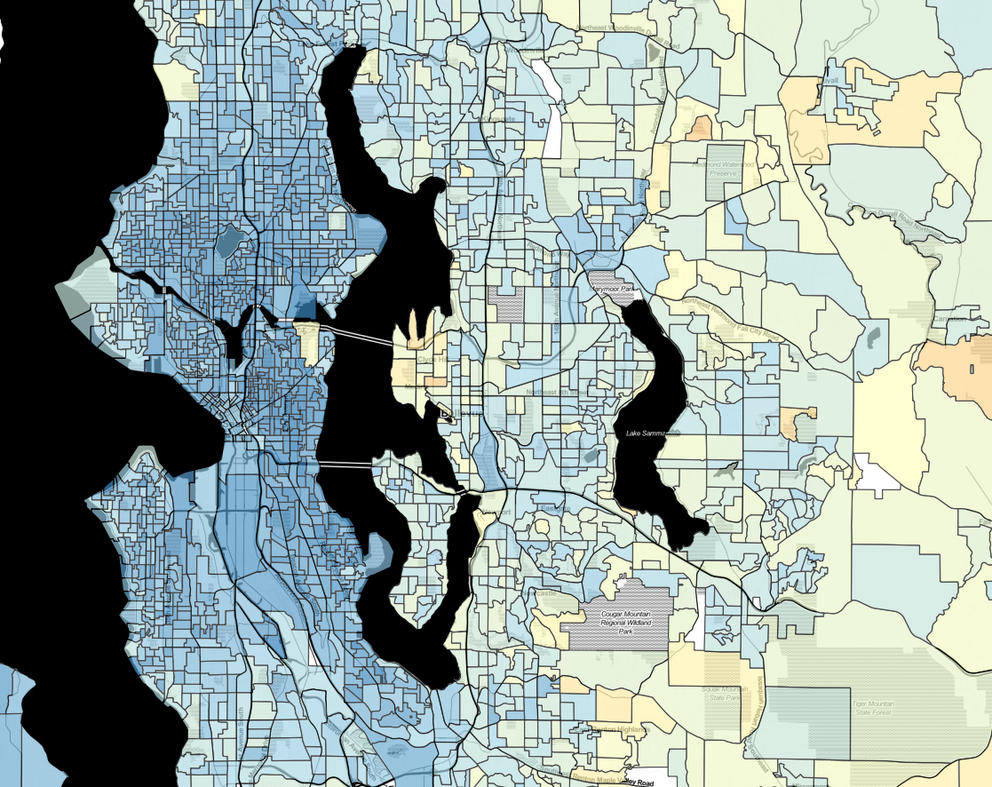It’s an Election Night ritual. Washington State political wonks – perennial and fair-weather – gather ‘round the electronic hearths of their laptops and smartphones. They refresh frantically as soon as the clock strikes 8 p.m. Meanwhile, hundreds of thousands of votes are tabulated by counties across the state.
Inevitably, just past 8:10 p.m., the first results show up. And they are awful. Or great! It all depends on which of Washington’s 39 counties reports first. The true Election Night smartypants knows how to look beyond the basic numbers. They know how to look at what the early numbers tell us, both about the eventual outcome, and about the state of Washington politics. They know how to look at the first returns out of Cowlitz County, nod knowingly, murmur, “Of course – light manufacturing,” and return to the Election Party cheese dip.
With this guide, you too can join the ranks of Election Night smartypantses, and impress your friends with your Washington democracy expertise. Let’s dig in.
Reading the map
In Washington State, “polls” close at 8 p.m. Just about ten minutes later, the first result will pop up. Because smaller counties count faster, this first result is often from a more rural area. If the first votes that pop up total a few thousand, do not panic! There’s good chance that the first numbers are from a county with more livestock than people.
If you want to know who’s really ahead, wait for a few key areas to come in. Three Puget Sound-area counties make for excellent barometers: Kitsap, Pierce, and especially Snohomish. A Republican running statewide generally needs to win all three to be competitive, and winning none nearly guarantees a shutout. Snohomish in particular is a great microcosm of the state. If a candidate is breaking 52 percent there, they’re probably in good shape to win.
King County is also very, very important. Of course, Democrats almost never lose King, but the margin matters. A Democrat who is at 65 percent in King County is in a vastly better position than one who’s polling 60 percent.
King is also an important barometer because it contains a ton of crucial higher-income, college-educated voters who are oftentimes a swing bloc in Washington. Beware, though: historically, the Democratic margin in King County has increased after Election Night, as later ballots come in. If a Democrat running statewide is near 65 percent here on Election Night, it’s probably game over.
Finally, one wildcard to watch. This year, Donald Trump’s nomination has set into place a bit of realignment among white voters. Federally, the GOP is losing college-educated whites, while outperforming their historical showings among whites without college education. If that filters down to state-level races, watch Washington’s traditionally Democratic blue-collar counties: Cowlitz (Kelso-Longview), Mason (Shelton), Pacific (Raymond), and Grays Harbor (Hoquiam-Aberdeen).
Ballot measures
It’s an open secret that Washington’s statewide races are on the non-competitive side this year. Besides the fierce Secretary of State match between incumbent Republican Kim Wyman and Democratic challenger Tina Podlodowski, and the Republican-on-Republican State Treasurer’s race, most offices lean strongly toward the Democrat. On the other hand, we have some truly interesting ballot measures this year. Here’s a few to watch:
- Initiative 732, the carbon tax: Despite a deep divide in the environmental community, recent polling has shown this measure with a small lead. Still, the high number of undecideds is a major danger. To pass this, left-leaning voters will need to present more of a united front than the environmental community has. Watch urban counties.
-Initiative 735, which encourages the repeal of Citizens United: This one is popular in the polls, and has passed states as conservative as Montana. Expect a surprisingly progressive showing out of Eastern Washington.
-Initiative 1433, which increases minimum wage to $13.50 by 2020: Polls show this passing easily, and minimum wage increases tend to be popular, even in some conservative areas. Here, watch how strong the divide is between urban Seattle and the parts of Washington with lower costs of living and more struggling economies.
-Initiative 1464, creating a public campaign finance program: We have little precedent for how this sort of measure will perform, but expect it to rely on progressive voters to pass – but may be a less partisan issue than many expect.
-Initiative 1491, regarding extreme risk protection orders for firearms: Expect this one to pass by an even greater margin than 2014’s popular Initiative 594, which expanded background checks. Watch to see whether I-1491 can win even in rural areas where I-594 failed.
-Sound Transit 3: Voters in metropolitan parts of King, Pierce, and Snohomish counties will be voting on this transit expansion. Public polling here isn’t available, although it does bode well that Puget Sound residents are mostly pleased with the region’s trajectory, despite overall national pessimism. Be careful to look at the results for all three counties together. A solid win could still involve a failing result in Pierce County.
State legislature
During Clinton’s polling zenith, eager Democrats were hoping for some easy wins down the ballot. With that race somewhat tightened, local Democrats instead have to battle for control of both the House and Senate. Here are some key districts to track.
-Watch King County’s Eastside. There are several key races in educated, suburban Seattle districts where the national Republican brand is in the ditch. This includes races in the Issaquah-based 5th District (the Mullett/Magendanz Senate race and Burner/Graves House race) and Bellevue-based 41st District (the Litzow/Wellman Senate race).
-Three less-educated, less-affluent suburban districts are also question marks. That includes the Lakewood-based 28th District (the Kilduff/Wagemann House seat), Federal Way-based 30th District (both House seats), and the 17th District in suburban Vancouver (the Probst/Benton Senate race and Kim/Kraft House race). Unlike the Eastside districts, where Trump is likely to be an unwelcome presence, the national climate has a more ambiguous role in these contests.
-Two rural-leaning districts are seeing tight races. The 10th District, which includes Whidbey and Camano Islands through Mount Vernon, sees a competitive State Senate race between incumbent Republican Barbara Bailey and Democrat Angie Homola. This is an area that has trended Democratic in recent years. The 26th District, spanning from Gig Harbor to Bremerton, has a competitive house match between incumbent Republican Jesse Young and Democrat Larry Seaquist (Disclaimer: Seaquist is a client of the author). Both districts span multiple counties; watch results accordingly.
If you’d like to learn more about these races, check out Lester Black’s excellent breakdown of battlegrounds.
But wait – It’s not over!
Unlike neighboring Oregon, ballots in Washington need only be postmarked by Election Day, not received. That means that thousands of Washington voters’ ballots will arrive on Wednesday, or even later. Tuesday night’s count will only include as many ballots as have been received, signature-checked, and fed into counting machines by 8 p.m.
Close races may take a couple of weeks to sort out. On top of that, the Democratic vote margin in Washington tends to increase after Election Night, driven in part by a spike in late progressive votes out of King County.
What does that mean? It means that, if things are ambiguous on Election Night, you could be in for the long haul. Sometimes even the most brilliant electoral smartypants just has to wait and see.
Now, go forth. Thrill your friends. Amaze your enemies. Tell everyone around you to stop freaking out when a majority-livestock county in Eastern Washington reports its votes first. This is your day, smartypants. Enjoy!



